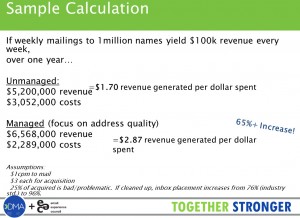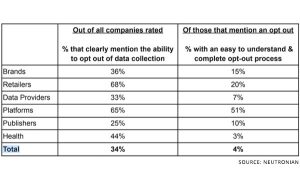The whole concept of e-commerce began to take shape in 1989 with the development an internet-based system that did e-commerce transactions for the first time.
According to the U.S. Commerce Department, online retail sales account for over a third of the overall retail sales done in the U.S. With these facts in mind, it’s no secret that the eCommerce industry is booming. Some studies even predict that eCommerce sales will reach over $ 400 billion annually over the next few years.
But, for eCommerce stores, the industry can also be extremely competitive. Here are seven tips from ecommerce experts across the globe, to boost your eCommerce revenue quarter after quarter.
1) Tap into influencers
Influencer marketing isn’t exactly new, but far too many eCommerce businesses still aren’t taking advantage of it.
Sid Bharath of Thinkific says, “eCommerce businesses need to tap into the power of social media influencers. Influencer marketing has been around for years but it’s only starting to become mainstream (as in smaller businesses now have access to influencers) and it’s become crucial to generating traffic, especially since other traditional sources, like SEO and ads, are getting tougher.”
Essentially the goal is to build strategic partnerships with key individuals who have influence over potential buyers. They could be celebrities or industry experts, but generally they take on the role of influencers because they can bring in large quantities of would-be customers.
2) Diversify across the Internet
I’m sure you’ve heard the old adage, ‘don’t put all your eggs in one basket’. This is especially true when it comes to eCommerce.
“One of the best ways to boost sales revenue is by participating in
multi-channel selling. One study from Stitch Labs shows that merchants who sell on just one marketplace (in addition to their own online store) experience a 38% increase in revenue, compared to when they sold exclusively on their site. Managing all of these difference channels can be a challenge, especially when it comes to inventory, but if everything is properly integrated, it shouldn’t be too much of an issue,” explains Liz Hull of Merchant Maverick.
3) Focus on visitor conversions
Many businesses make the mistake of focusing only on web traffic, or how many visits does a web site visit. But in reality, equal focus should be placed on converting visitors into customers.
According to Best in Class research from Inflow, making small changes to an ecommerce site, such as implementing an exit offer, ungating a customer’s wish list and implementing a one page checkout can all lead to higher conversion rates.
4) Branding remains important
Even if you’re a new ecommerce business, it’s imperative to never ignore branding. After all, products and services have lifecycles but brands have staying power.
Branding includes everything from your logo and website, to your messaging. The last thing you want to end up with is consumers who are confused about who you are and what you stand for.
5) Build relationships with clients
Maintaining good customer relationships still remains a pivotal cornerstone in business, and the move toward e-commerce and more online sales hasn’t changed that. It just alters the interactions from face-to-face to more of an online customer support service.
Charlotte Lynch of Modern Retail elaborates, “One way to get more web traffic [and engagement] is having a blog and offering your customers help rather than just a sale. For example, for a clothing eCommerce site a blog post during Summer with 5 summer outfits on trend now bring people to your site, builds up a relationship, helps them and they then click through to your site to buy a summer outfit.”
6) Max out protection
In this day of cyber attacks, building a secure web site and financial payment structure is doubly important. Consumers won’t come to a site that has been known for getting hacked, so imply a secure payment processor and a protected site.
“Merchants should look at other ways to increase security and defend revenue streams which won’t impact conversion, such as chargeback mitigation, better reporting, ensuring MID health and reducing operational costs. They can essentially have their cake and eat it too by maintaining solid, yet unobtrusive, authentication standards. This encourages shoppers to complete transactions, while also protecting revenue streams more effectively,” advises David Decorte of Chargebacks 911.
7) Use video marketing
Video marketing is essentially the modern version of TV commercials. It is the new way to get your message and product out to the online public. It’s currently one of the most effective forms of marketing because it presents visuals of your business in a way that the consumer base can peruse at their convenience and leisure.
Miljana Mitic of GoodVidio talks about other benefits of video marketing, “SEO-savvy ecommerce marketers use rich media to attract visitors. One such example is videos, which on average lead to 157% more organic search traffic.”
E-commerce continues to grow as people are looking for convenience in an increasingly fast-paced world. The fact that online sites can provide greater selections than even a store makes shopping online even more appealing.
With the demand in the e-commerce continuing to expand, don’t get left behind. Staying up on trends in the eCommerce industry will help you boost web traffic, conversions and ultimately, sales.
Digital & Social Articles on Business 2 Community(70)








